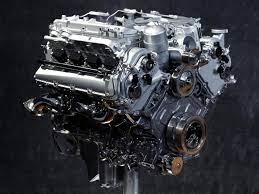There are a variety different types industrial reactors are used in chemical process industries for conducting reactions and produce desired chemicals. These can be Batch, or continuous process.
CSTR is a stable state reactor and can be operated by a symbiosis or battery of units. It’s quite simple to regulate temperature using these kinds of industrial reactors. Other types of reactors include CSTRs as well as PFRs. GLRs. They may also feature various options of characteristics and components, like baffles, temperature probes as well as pH probes, valves and baffles.
Chemical Reactors Vessel
A chemical engineer’s reactor is a vessel inside where chemical reactions can take place. The range of options can vary from a basic open kettle with stirrers and heaters to massive designs that appear on images of industrial structures such as kilns that can accommodate at all times, thousands of tonnes of materials. Reactors are utilized in making a array of substances, such as oil, chemicals, food and pharmaceuticals.
Reactors are able to operate as batch or continuous processes. In batch reactors, the ingredients and reagents are usually fluids (gases as well as liquids). They function in a state of transient operation where crucial process variables like temperature and pressure vary with the time. Chemical reactors’ operation chemical reactors can involve high temperature and pressure, as well as they could contain harmful or reactive chemicals. This requires special safety features and methods to monitor this process and ensure the environmental. The design, use, and upkeep of chemical reactors require extensive expertise and training. This can result in them being expensive to operate.
As a continuous procedure, the reagents and products are continually fed into the reactor in the form streams and then converted into a product that is desired. After that, the product exits the unit and is separated from the reagents in another process, such as distillation. The reactions can be carried out in a wide range in reactor types, such as tubes, flow reactors with tubular structures, CSTR’s as well as plug flow reactors. fluidized bed used reactors for sale , and slurry flow reactors. The development of chemical reactors for sale involves making trade-offs in many areas, including that of the size of the vessel versus the conversion of reactants, hot spot temperature versus heat transfer area, reagent use as well as selectivity. The trade-offs are systematically optimised using a multi-objective optimization process that is based on solving the general mass transfer equations that characterize the entire system.
Industrial Reactors Storing
Reactors are tanks used for storing, processing and transporting chemicals across a variety of industries. They range in size, from small lab equipment to industrial scales that may produce lime from limestone or phenol from the benzene. A typical chemical reactor is a body or tank equipped with an the agitation mechanism and also a heating or cooling system to control the temperature and speed of reaction. In accordance with the chemical process being used, these industrial tanks can be batch or continuous.
The most popular choice in continuous process reactions is a tubular or plug flowing reactor (figure 1). These tanks for industrial use have the capacity of a fixed amount and continuous feed rate of reactants. It is therefore easy to control precisely the time of residence within the vessel. Furthermore, the product that is produced can be considered to be superior to that produced those produced in batch processes. SMR technology is driven by the necessity of reducing the cost of electricity for sites that are remote, particularly those not served by large grid systems. The SMR also offers the chance quicker construction times through modularity and economies of scale. It is also possible to design them to provide a greater level of security inherent in them as compared to big reactors.
In one instance, four SMRs are in operation within the co-generation plant, which is located in the remote region of Siberia and each is a graphite moderated boiling water design. They provide district heating as well as 11MW of power net per unit, and are not connected to grids.
A different option is a fbr one of the most commonly used reactors for gaseous reactions. These tanks feature nano-sized catalyst particles that rest on a distribution plate. As gaseous reactionants are introduced into the system, they are passed over the catalyst before being converted into atomic hydrogen. The hydrogen atoms are able to rapidly mix with oxygen, resulting in the final product.
Manufacturer of corrosion resistant chemical as well as industrial reactors in various sizes and pressure ratings. These stainless steel vessels come with various material finish, heat transfer surfaces and baffles that allow for efficient mixing. They also meet requirements for ASME, API, UL and CE codes. Most common forms of chemical reactors are PFRs and CSTRs. The PFR features a tubular design that carries out the majority of the reactions. It’s perfect for small production. It is also the most simple type of reactor. It features a jacket in order to permit utilities to heat or chill the reaction material. It has a distribution of the time of residence, with certain substance leaving the reactor right away in the event of a fire, while other materials remain for longer durations.




